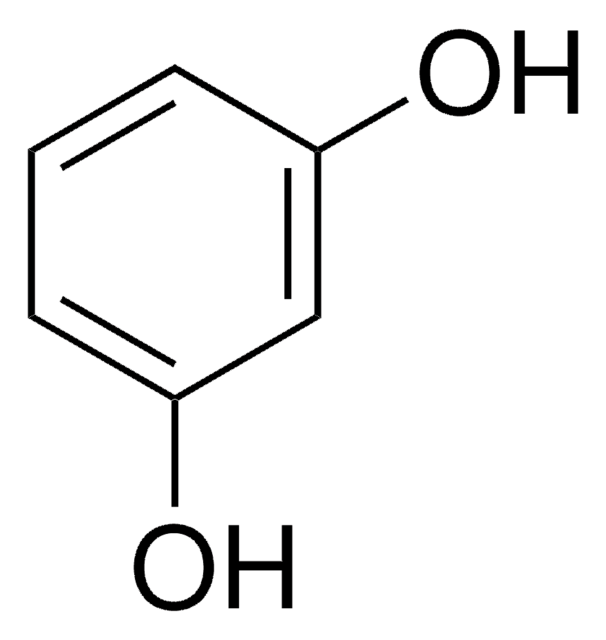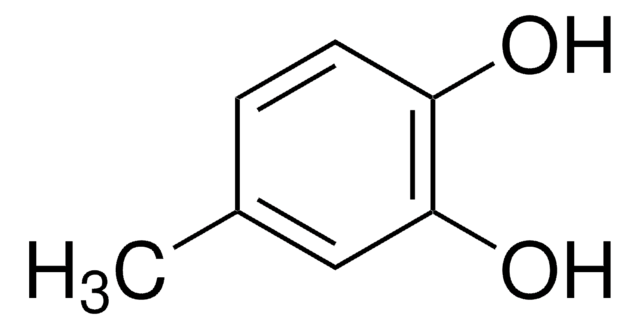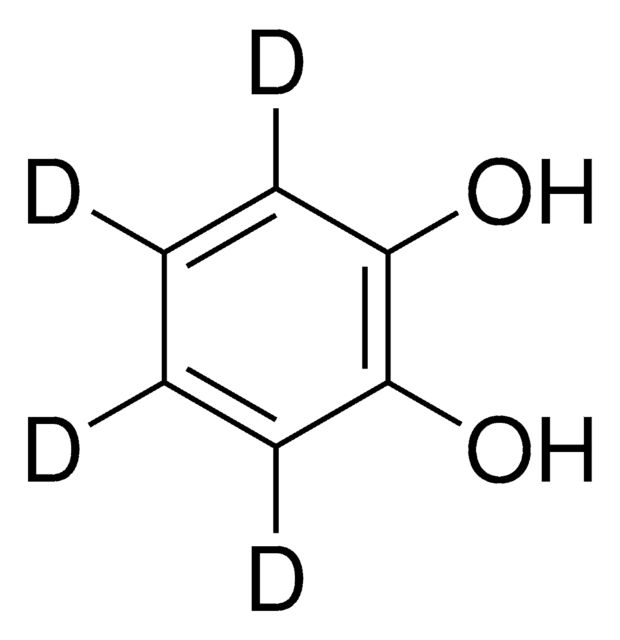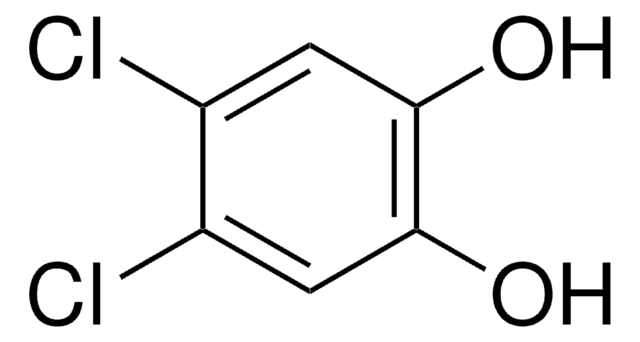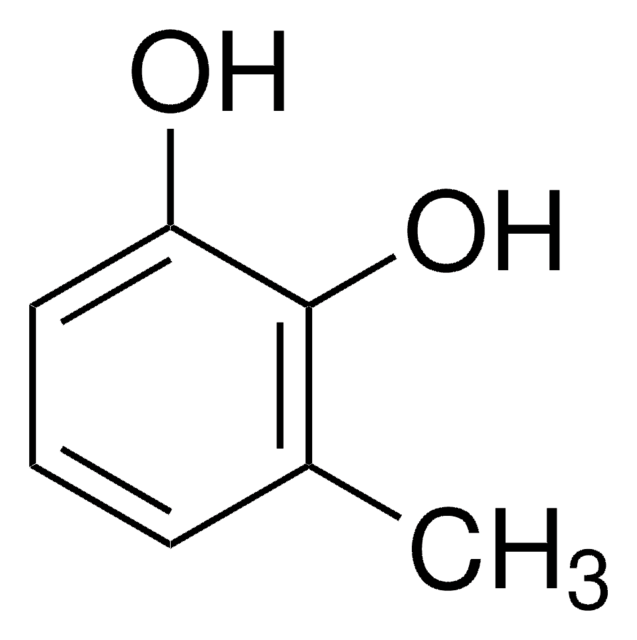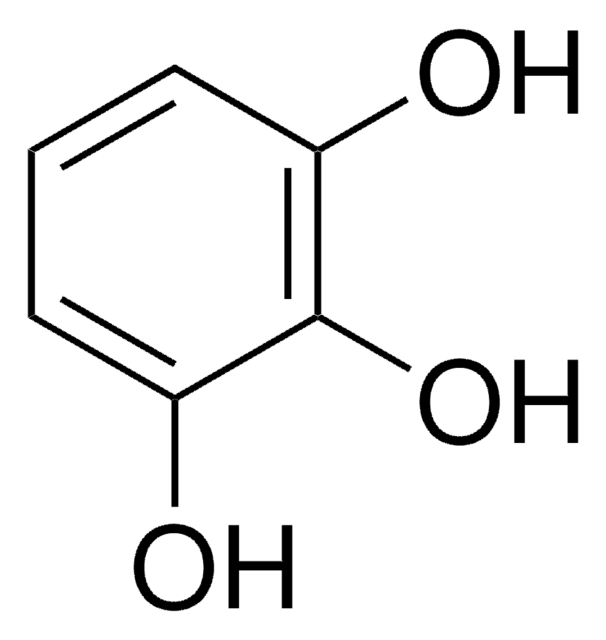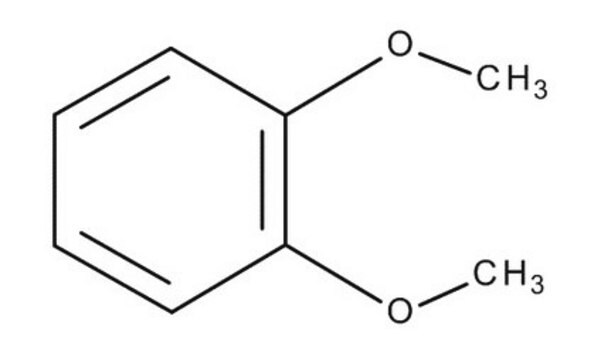135011
1,2-Dihydroxybenzene
ReagentPlus®, ≥99%
Synonym(s):
Pyrocatechol, 1,2-Benzenediol, 1,2-Dihydroxybenzene, 2-Hydroxyphenol, Catechol
About This Item
Recommended Products
vapor density
3.8 (vs air)
Quality Level
vapor pressure
1 mmHg ( 75 °C)
10 mmHg ( 118.3 °C)
product line
ReagentPlus®
Assay
≥99%
form
solid
bp
245 °C (lit.)
mp
100-103 °C (lit.)
SMILES string
Oc1ccccc1O
InChI
1S/C6H6O2/c7-5-3-1-2-4-6(5)8/h1-4,7-8H
InChI key
YCIMNLLNPGFGHC-UHFFFAOYSA-N
Looking for similar products? Visit Product Comparison Guide
General description
Application
1,2-Dihydroxybenzene in combination with amberlite XAD-2, can be used as a chelating resin in the determination of metal ions, using atomic absorption spectrophotometry (AAS).
Legal Information
Signal Word
Danger
Hazard Statements
Precautionary Statements
Hazard Classifications
Acute Tox. 3 Dermal - Acute Tox. 3 Oral - Carc. 1B - Eye Dam. 1 - Muta. 2 - Skin Irrit. 2 - Skin Sens. 1
Storage Class Code
6.1C - Combustible acute toxic Cat.3 / toxic compounds or compounds which causing chronic effects
WGK
WGK 3
Flash Point(F)
260.6 °F - closed cup
Flash Point(C)
127 °C - closed cup
Personal Protective Equipment
Choose from one of the most recent versions:
Already Own This Product?
Find documentation for the products that you have recently purchased in the Document Library.
Customers Also Viewed
Protocols
Separation of Resorcinol 50 mg/mL; Pyrocatechol; 2-Methylresorcinol; 4-Methylcatechol; 2,5-Dimethylresorcinol 50 mg/mL; 3-Methylcatechol 50 mg/mL; 4-Nitrocatechol 50 mg/mL
Our team of scientists has experience in all areas of research including Life Science, Material Science, Chemical Synthesis, Chromatography, Analytical and many others.
Contact Technical Service

